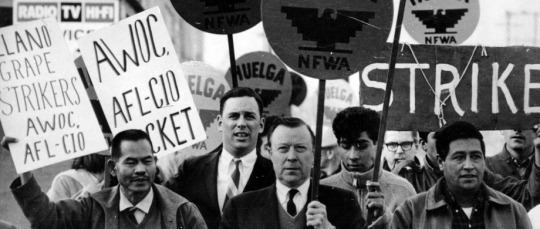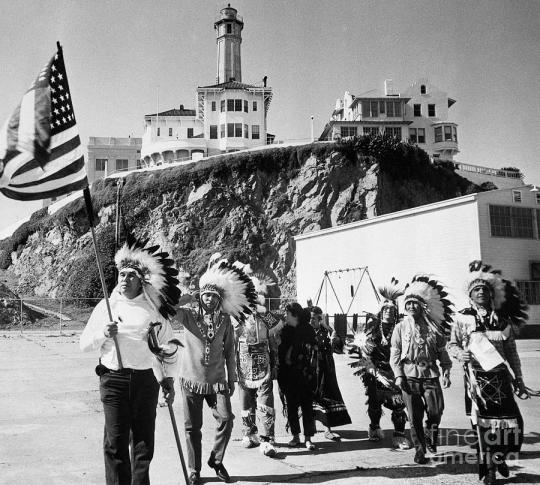#the latino student union. the filipino student union. and the black student union. all protested and held a counter event.
Explore tagged Tumblr posts
Text
nah instagram keeps recommending an acct to me whose entire shtick is that our very catholic college is not catholic enough, with such delightful posts as "genuinely comparing being pro choice to racism" and "the secularists are trying to destroy religion on campus by cancelling a guest speaker"
#aka that time abby fucking johnson was brought in to speak about abortion#and like half the student body including basically every minority and international student union#and lots and lots of self identified catholics#spoke out#and in turn hosted their own competing event about how the pro life movement is MORE than just being anti abortion#because abby johnson is a straight up racist like....i don't even care if you believe her stupid planned parenthood rhetoric#(even though it's largely bullshit)#she's a straight up racist and it should not exactly be shocking why. for example.#the latino student union. the filipino student union. and the black student union. all protested and held a counter event.#people didn't even make this big of a stink about matt walsh speaking here last year either#i mean some people did but nowhere near the volume of outrage. sigh#girl catholic is in the name of the fucking university. the fuck are you complaining about.#i wanna talk about me#also if you read this far and want to try and extrapolate where i go to school do me a favor and Don't#i want to complain i don't want to be doxxed thanks.
5 notes
·
View notes
Text
Strikes for Change
By: Jacob Chauvin
Ethnic Studies as we know, can be a sensitive topic to discuss with some, but gives us the cold hard truth about how our country started with diversity, and how we deal with diversity today. Diversity today, is what separates the U.S., from neighboring countries with its unique views, religious practices, and ethnic cultural values. But what did it take to get us to where we are today? Did it take bills? Laws? Amendments? Treaties? All of those are true, but it came down to each ethnic group’s cohesion and strikes to get each distinguishable movement sparked and ignited. The history of ethnic strikes is so important that we understand because it is within these strikes that made everything possible today, for the ethnic groups that battled poverty, discrimination, and social injustices based solely on their appearance and background.
San Francisco State College Strike
It was November 6, 1968, and few would know that this would mark the first day of the longest student strike in American history. Student leaders that attended San Francisco State College Third World Liberation Front marched with their demands for an education more relevant and accessible to their communities (African American, Asian American, Chicano, Latino, and Native American). This was a five-month long battle that engaged all parties involved in the school, police, and even politicians. Stemming from the original basic rights, protestors moved on to demand power and self-determination. The State resisted of course, but that didn’t stop the activists and they held strong. Though this movement didn’t change any economic or political structure, they strongly affected popular ideology and social relations. They also resulted in the formation of mass organizations and produced a cadre of activists who would continue to pursue their ideals.

BSU organizing protests to create equal learning opportunities.
Delano Grape Strike
Not all strikes though, however, were at institutions for education. Strikes were also formed for the ways of Filipino workers and Mexican American workers to get better working conditions in California. One is the Delano Grape Strike, which would change the course for immigrant workers who had to work in intense conditions just so grape farmers can meet the demands of the world. On September 19, 1965, at 430 am in Delano California, 200 Filipinos and Mexicans stood below the NFWA (National Farm Workers Association) offices, holding signs inscribed with one word; “Huelga” (Strike). This strike lasted 5 long years, being disregarded by the Delano Chamber of Commoners. It was 1970 when that fight for the civil rights with Delano agricultural working communities was won. NFWA became a union, changing the name to United Farm Workers.

Delano Grape Strike led by Cesar Chavez and Larry Itilong.
Standing Rock and Alcatraz Strike
Another distinguishing strike was involving the Native Americans at Standing Rock, and Alcatraz. In April of 2016, the Standing Rock Sioux established the Sacred Stone protest camp at the confluence of the Cannonball and Missouri rivers in North Dakota. Companies began pipeline construction, and as a result, the Sioux began a protest because the pipeline’s draft environmental assessment did not address risks to their reservation’s water supply. Alcatraz is seen as a Historic Landmark and works with individuals and organizations to preserve and interpret its long history of activism.

Native American Tribes occupying Alcatraz Island
Conclusion...
Strikes are history, strikes are what bring cohesion and unity amongst the unique ethnic groups involved. It is a way for their voices to be heard in this ever-loud country we live in. Strikes are necessary because if a group does not strike, then how can we be heard?
LEARN MORE BELOW!
youtube
youtube
youtube
Sources:
Epstein, K. K., & Stringer, B. (2022). The Student Strike that Won Ethnic Studies and Black Student College Admissions. Journal of African American Studies, 26(4), 503–513. https://doi.org/10.1007/s12111-022-09598-y
Contemporary Asian America. (n.d.). Google Books. https://books.google.com/books?hl=en&lr=&id=0ygUCgAAQBAJ&oi=fnd&pg=PA25&dq=history+of+ethnic+study+strikes&ots=kTOQuCtrQ3&sig=3WdaRHhIg3m9AA20FDbLvEnIe1o#v=onepage&q=history%20of%20ethnic%20study%20strikes&f=false
Lambert, A. M. (2021). Cesar Chavez: The 1965 Grape Boycott and the 400-Mile Pilgrimage.
Beisaw, A. M., & Olin, G. E. (2020). From Alcatraz to Standing Rock: Archaeology and Contemporary Native American Protests (1969–Today). Historical Archaeology, 54(3), 537-555.
FUNG, C. (2014). “THIS ISN’T YOUR BATTLE OR YOUR LAND”: THE NATIVE AMERICAN OCCUPATION OF ALCATRAZ IN THE ASIAN-AMERICAN POLITICAL IMAGINATION. College Literature, 41(1), 149–173. http://www.jstor.org/stable/24544625
Tintiangco-Cubales, A., Kohli, R., Sacramento, J., Henning, N., Agarwal-Rangnath, R., & Sleeter, C. (2015). Toward an ethnic studies pedagogy: Implications for K-12 schools from the research. The Urban Review, 47, 104-125.
0 notes
Photo


From The Guardian:
It’s been known as dope, grass, herb, gage, tea, reefer, chronic. But the most familiar name for the dried buds of the cannabis plant, and one of the few older terms still in use today, is “marijuana”.
For the prohibitionists of nearly a century ago, the exotic-sounding word emphasized the drug’s foreignness to white Americans and appealed to the xenophobia of the time. As with other racist memes, a common refrain was that marijuana would lead to miscegenation.
Harry Anslinger, the bureaucrat who led the prohibition effort, is credited as saying back then: “There are 100,000 total marijuana smokers in the US, and most are Negroes, Hispanics, Filipinos and entertainers. Their Satanic music, jazz and swing result from marijuana use. This marijuana causes white women to seek sexual relations with Negroes, entertainers and any others.”
Today “cannabis” and “marijuana” are terms used more or less interchangeably in the industry, but a vocal contingent prefers the less historically fraught “cannabis”. At a time of intense interest in past injustices, some say “marijuana” is a racist word that should fall out of use.
Harborside, which is among the oldest and largest dispensaries in California, says on its website: “‘Marijuana’ has come to be associated with the idea that cannabis is a dangerous and addictive intoxicant, not a holistic, herbal medicine ... This stigma has played a big part in stymying cannabis legalization efforts throughout the US.”
It’s clear why a business like Harborside would prefer the more scientific word for branding purposes, but does that mean everyone should follow along?
The word “marijuana” comes from Mexico, but its exact origins remain unknown. According to the book Cannabis: A History by Martin Booth, it may derive from an Aztec language or soldiers’ slang for “brothel” – Maria y Juana.
The practice of smoking it arrived in the US from the south during the late 19th and early 20th centuries. Mexican laborers and soldiers carried it into the American south-west. Sailors brought it from Brazil and the Caribbean when they docked in New Orleans, where black jazz musicians adopted it.
In the last few years, the US state marijuana legalization experiments have grown into a multi-billion dollar industry. But while companies build out multi-million dollar grow houses and edibles factories, huge numbers of people continue to face serious consequences for possessing negligible quantities. After legalization in Colorado, arrests of black and Latino juveniles for illegal possession increased.
In 2016, there were almost 600,000 US marijuana arrests, more than for all violent crimes combined. The vast majority of those pot arrests were for low-level possession – and disproportionately affected minorities.
Statistics show different races use marijuana at roughly the same rate, but racial minorities are far more likely to face punishment. According to the American Civil Liberties Union, between 2001 and 2010, African Americans were arrested for marijuana possession at almost four times the rate of whites.
Relatively few of the 600,000 will serve extended prison sentences for marijuana-related offenses, but having a past conviction can still block access to housing, student loans and employment.
Advertisement
With legalization, some states and communities want to help those carrying minor cannabis convictions to be able to clear their record. Similarly, several cities and states are trying to create so-called equity programs to enable entrepreneurs from communities hit hardest by the war on drugs to join the industry.
But when the industry had the chance to take a stand against the racism of the past, it backed down.
After the 2016 election, Donald Trump nominated the then Alabama senator Jeff Sessions to be attorney general, the country’s top law enforcement official. While some Republicans, including Trump, have expressed a willingness to co-exist with marijuana, especially for medical purposes, Sessions remains an unreformed drug warrior. In 2016, he said: “Good people don’t smoke marijuana.” Instead of protesting his all-but-assured confirmation, the industry’s primary trade group, the National Cannabis Industry Association [NCIA], decided not to risk angering him.
The now attorney general has since reversed the more lenient Obama-era policies and ordered federal prosecutors to pursue the most serious charges they can, likely resulting in more drug offenders spending longer in prison.
For Sessions, it’s easier to come down hard on ordinary lawbreakers, who are disproportionately black and brown, than state-licensed cannabis business owners, who are overwhelmingly white.
The industry’s response has been to let him – while encouraging people to call the plant cannabis.
As with other symbols of past oppression, from the pink triangle to the n-word, there’s a powerful tradition of marginalized communities redeploying symbols of their oppression. It’s these communities – not businesses – who have the moral authority to decide if marijuana is a racist word which should be avoided or an important reminder of a more racist past.
#cannabis#socialreform#criminaljustice#marginalizedfolks#changinglanguage#systemsofoppression#hempforthefuture
1 note
·
View note